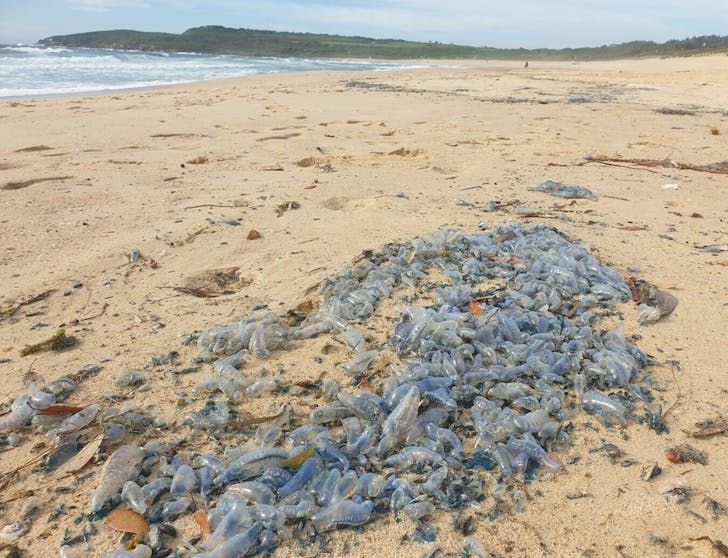Bluebottle Season In Sydney: What You Need To Know This Summer
Sydney summer has officially arrived when your beach day turns into a cautious game of “is that seaweed or a bluebottle?” These bright blue floaters might look harmless, but anyone who’s brushed past one knows they pack a nasty sting.
Here’s everything you need to know about bluebottle season including when they appear, which beaches to watch, and how to deal if you get caught in the firing line.
When Is Bluebottle Season In Sydney?
Bluebottles (aka Portuguese man o’ war) love to crash the party from November through March, right when Sydney’s beach days are at their best. They’re driven ashore by warm northeasterly winds, which push the jelly-like creatures straight into swimmers’ paths. You’ll often spot the first wave of strandings at Bondi and Coogee, before they start turning up along Manly and the Northern Beaches too.
If you see a few washed up along the high tide line (or lifeguards flying those classic purple warning flags) that’s your cue to stay alert. Pro tip: early morning swims are your safest bet before the wind picks up and the bluebottles drift in.

Image credit: Surf Life Saving Foundation | Website
Which Beaches Are Most Affected?
Sydney’s east-facing beaches are prime real estate for bluebottle invasions. Bondi, Bronte, Coogee, Freshwater, and Manly tend to cop it first when the nor’easters roll in. Lifeguards keep a close eye on daily conditions, and surf clubs will flag closures or advisories if things get too stingy (literally). You can also check the Surf Life Saving Beachsafe app for real-time updates on bluebottle sightings before you head out.
If the flags are up and the shoreline’s dotted with translucent blue, consider swapping your beach plans for a harbour swim or ocean pool (you’ll still get your saltwater fix without the risk).
What To Do If You’re Stung (And How To Avoid It)
If you do get stung (it happens to the best of us), don’t rinse with fresh water—that’ll just make it worse. Instead, rinse the area with seawater, carefully remove any tentacles (use a stick or towel, not your hands), and immerse the sting in hot water (the hotter the better) for 20 minutes to ease the pain. If hot water is not available apply cold packs or ice in a dry plastic bag. Skip the vinegar; it doesn’t help with bluebottles and can actually make the sting worse.
If symptoms persist or you’re feeling dizzy, head straight to the nearest lifeguard station or call for medical help. For prevention, avoid swimming on windy afternoons, wear a rashie or wetsuit if you’re surfing, and stick to patrolled beaches where lifeguards can give the all-clear.
The Unofficial Start Of Sydney Summer
Bluebottle season is just another Sydney summer tradition—right up there with sticky sunscreen, ice-cold Zooper Doopers, and crowded Bondi car parks. While they can be a literal pain, knowing when and where they appear means you can dodge the sting and still make the most of beach season. So, check the wind forecast, hit the water early, and keep that hot shower ready (just in case).
Insider Tip: Want to stay ahead of the bluebottle curve? Download the Beachsafe app for live alerts, or follow your local surf club’s Instagram for daily updates. Because nothing ruins a beach day faster than a surprise sting.
Looking for more? Check out:
- The Best Sydney Beaches To Visit This Summer
- The Best Dog-Friendly Beaches In Sydney
- 12 Of Sydney’s Best Secret Beaches To Explore This Summer
Main image credit: Surf Life Saving Foundation | Website
